Breaking it Down: Knobbed Porgy (Chinese Steamed Fish)
Eugene L. 05.08.23
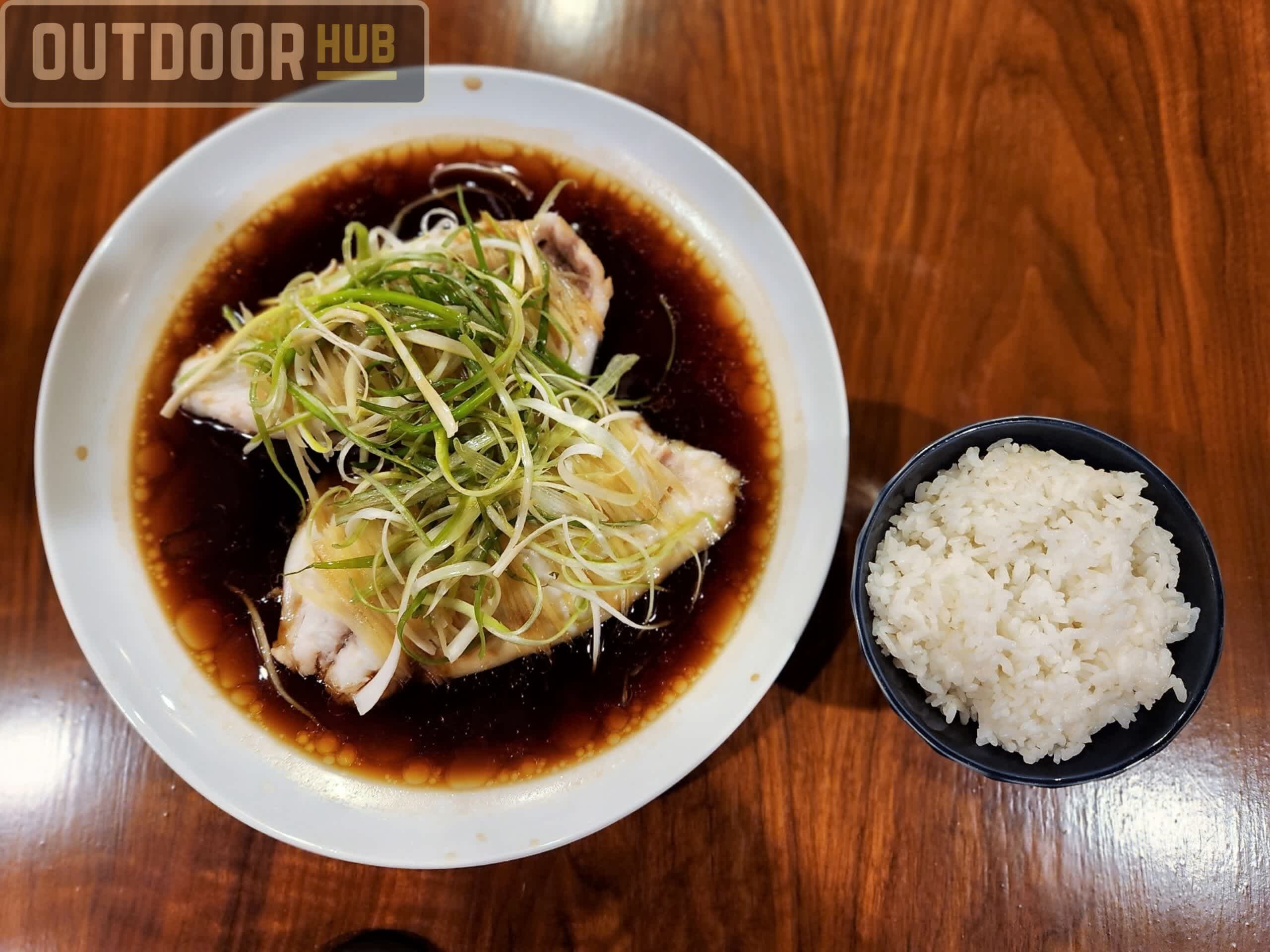
The family Sparidae consists of well over 100 species all over the world, better known as Porgies they consist of one of the most prolific families of marine fish in the world. Notable species among the 100+ Porgies would be; the Sheepshead, Red Porgy, Red Seabream, Pinfish, Jolthead Porgy, and Dorade, most of which are enjoyed as great table fare known for their white and mild meat. Most porgies are deep-bodied fish with a small mouth separated by a broad space from the eyes. They have a single dorsal fin with lots of strong spines that changes into soft rays as the fin goes down the back of the fish, and the scales tend to be large and firmly attached to the skin. In the Gulf of Mexico, the most common species you’ll run into is the Red Porgy, also called white or pink snapper, but occasionally you’ll catch something like a chocolate chip porgy, whitebone porgy, or in this case a Knobbed Porgy. Like most other porgies, the knobbed porgy we’re breaking down today has nice white flaky meat perfect for the steamer in today’s Chinese Steamed Fish recipe.

Breaking it Down on OutdoorHub
- Breaking It Down: Filleting an American Red Snapper
- Breaking it Down: Cleaning Spring Squid – (Sautéed Calamari)
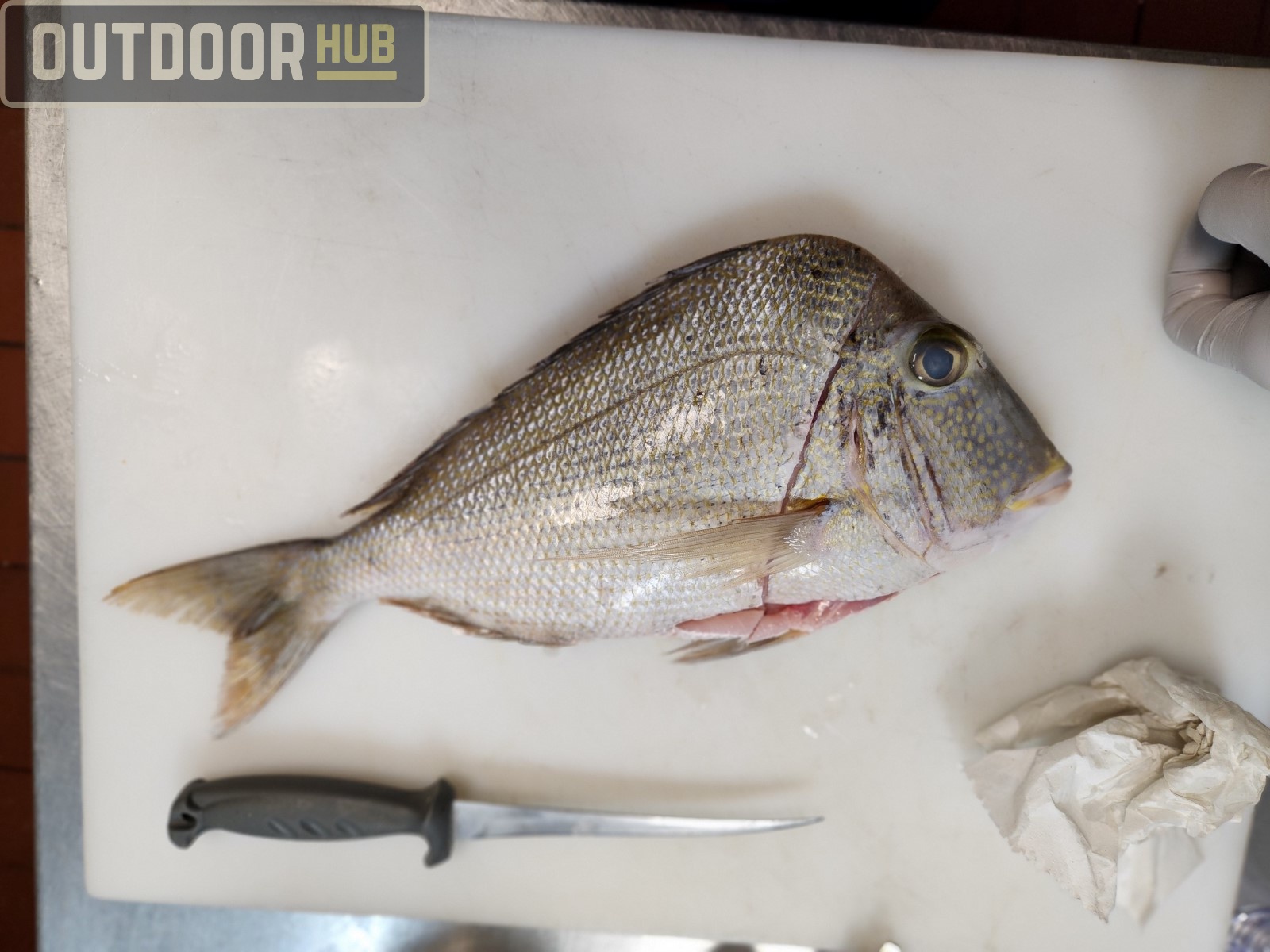
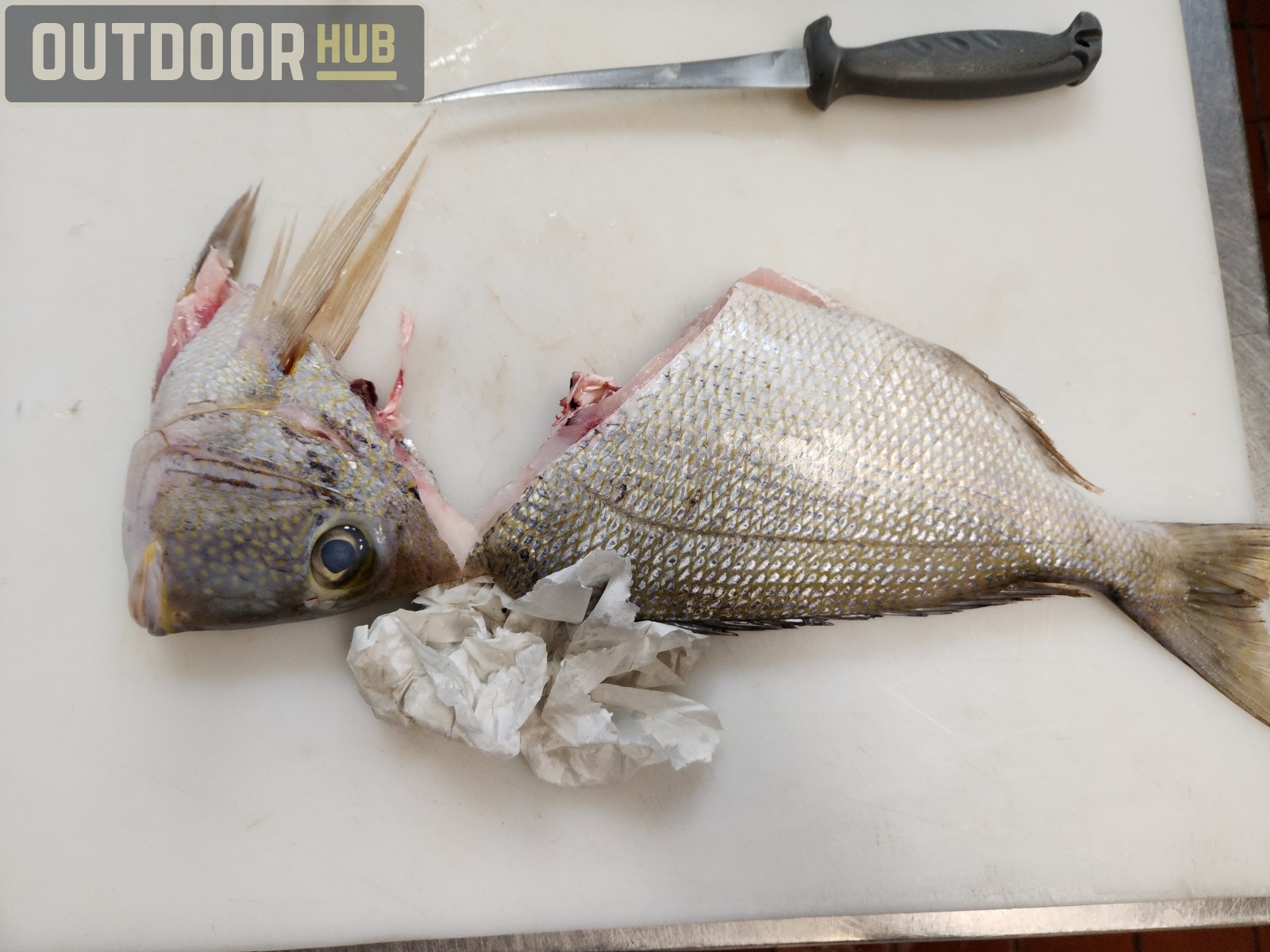
The first thing to do is remove the head, collars, and gills from the body of the porgy. Run the knife at an angle from just behind the pelvic funs up to the back of the head. Follow the bones of the fish for a clear line. Once cut on both sides of the fish pull back on the head while holding the body to pop the spine and break the head from the body. If there’s any meat or skin still holding just trim using the knife.
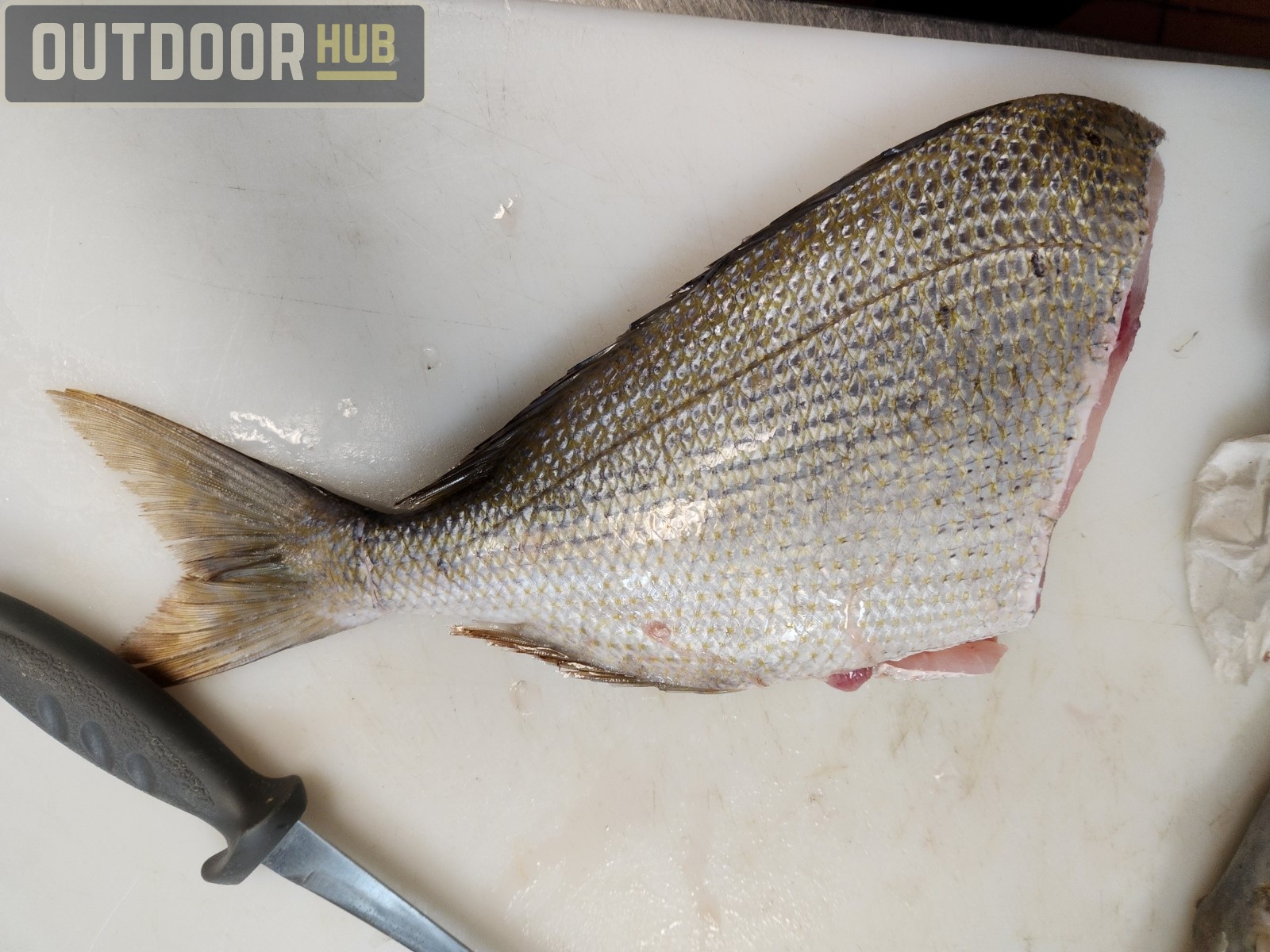
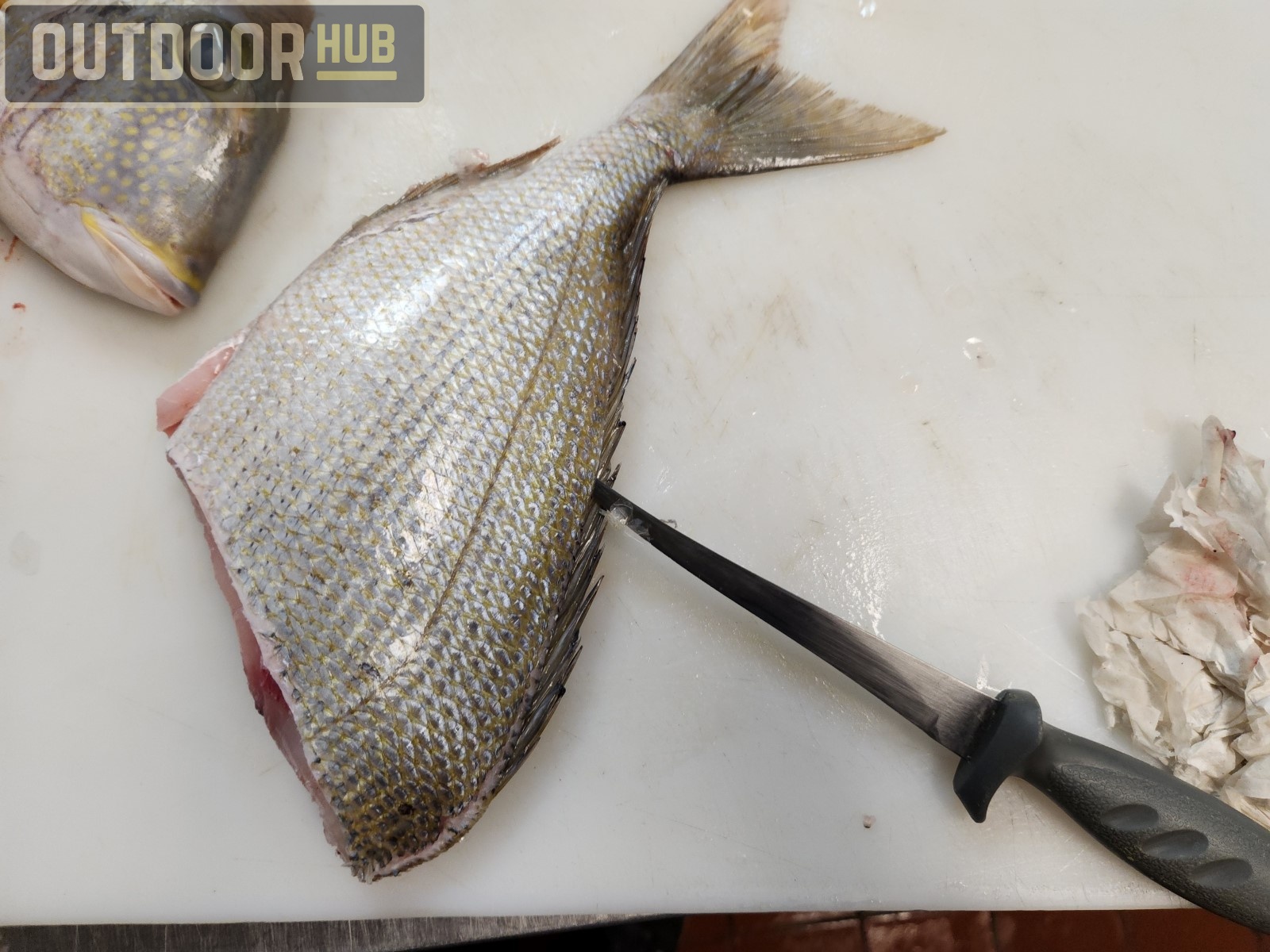
Now for the first cut to remove the fillets off the frame, take the knife and make a shallow cut along the dorsal fin of the fish. Tracing the outline of the fish and only just breaking through the skin. I left the scales on this fish to make skinning easier later. The scales act as a hard backing for the skin so your knife doesn’t push through as easily. But because the scales are still on the fish you have to be careful to pick off any that get on the fillet before cooking.
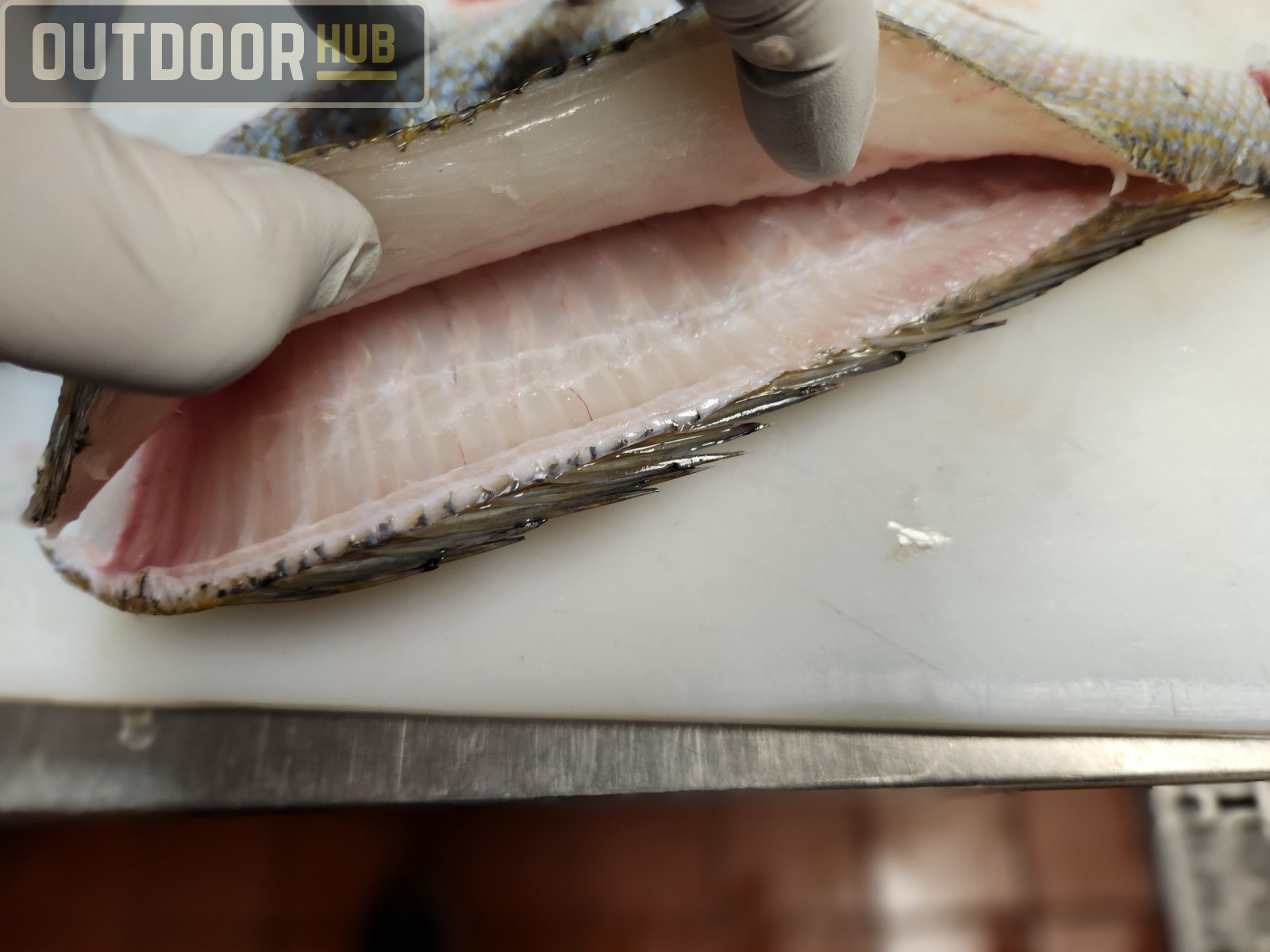
After that first cut, run the knife along the bones at a shallow angle. I prefer the first cut to be from tail towards the head. Make long smooth cuts when you do this, you don’t want to tear the meat up by sawing the knife back and forth. Lift the fillet as you go slightly to keep you from cutting the fillet up as well. You really want a sharp knife for this, it’ll make your life a lot easier by doing a lot of the work for you.
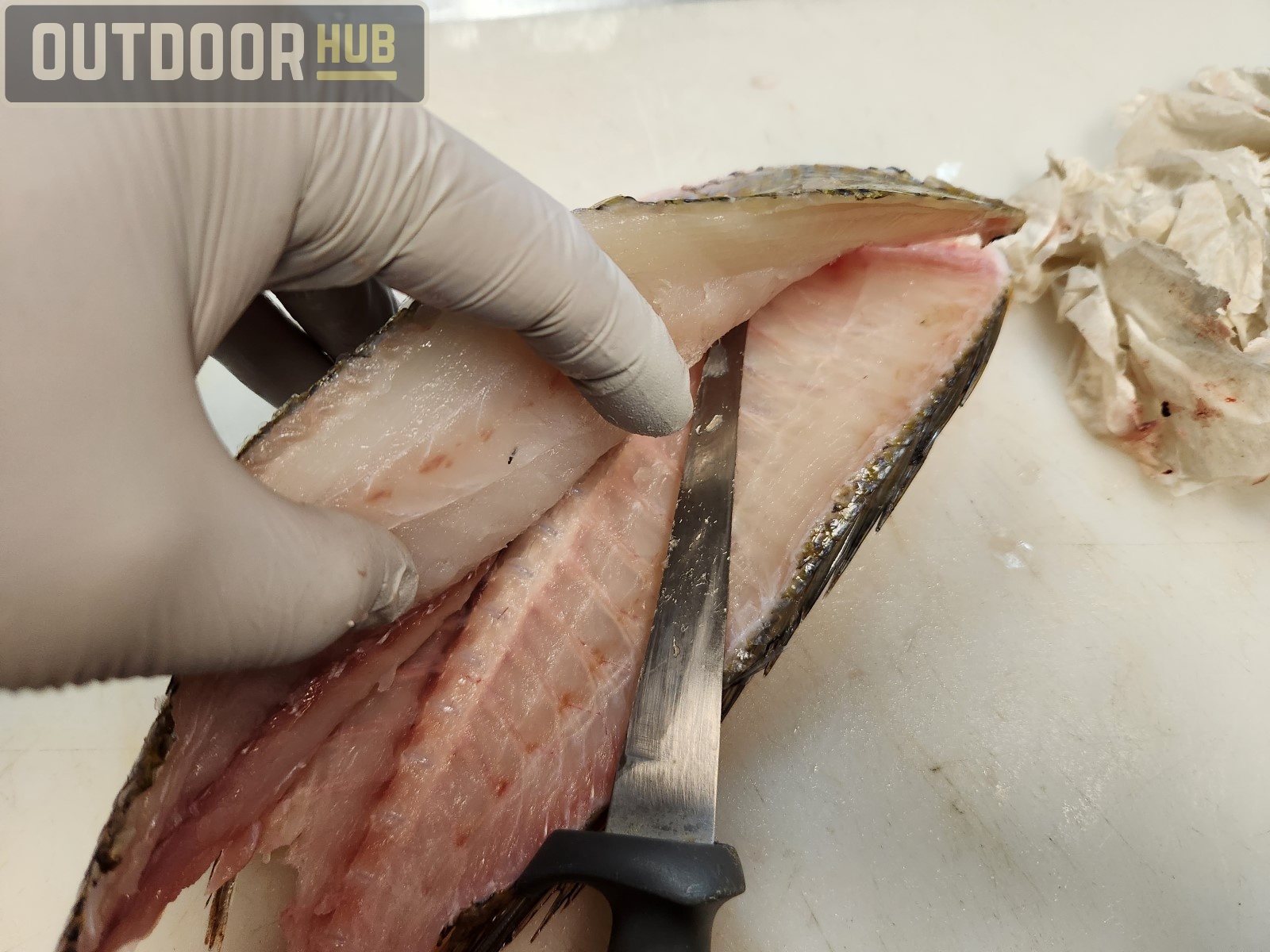
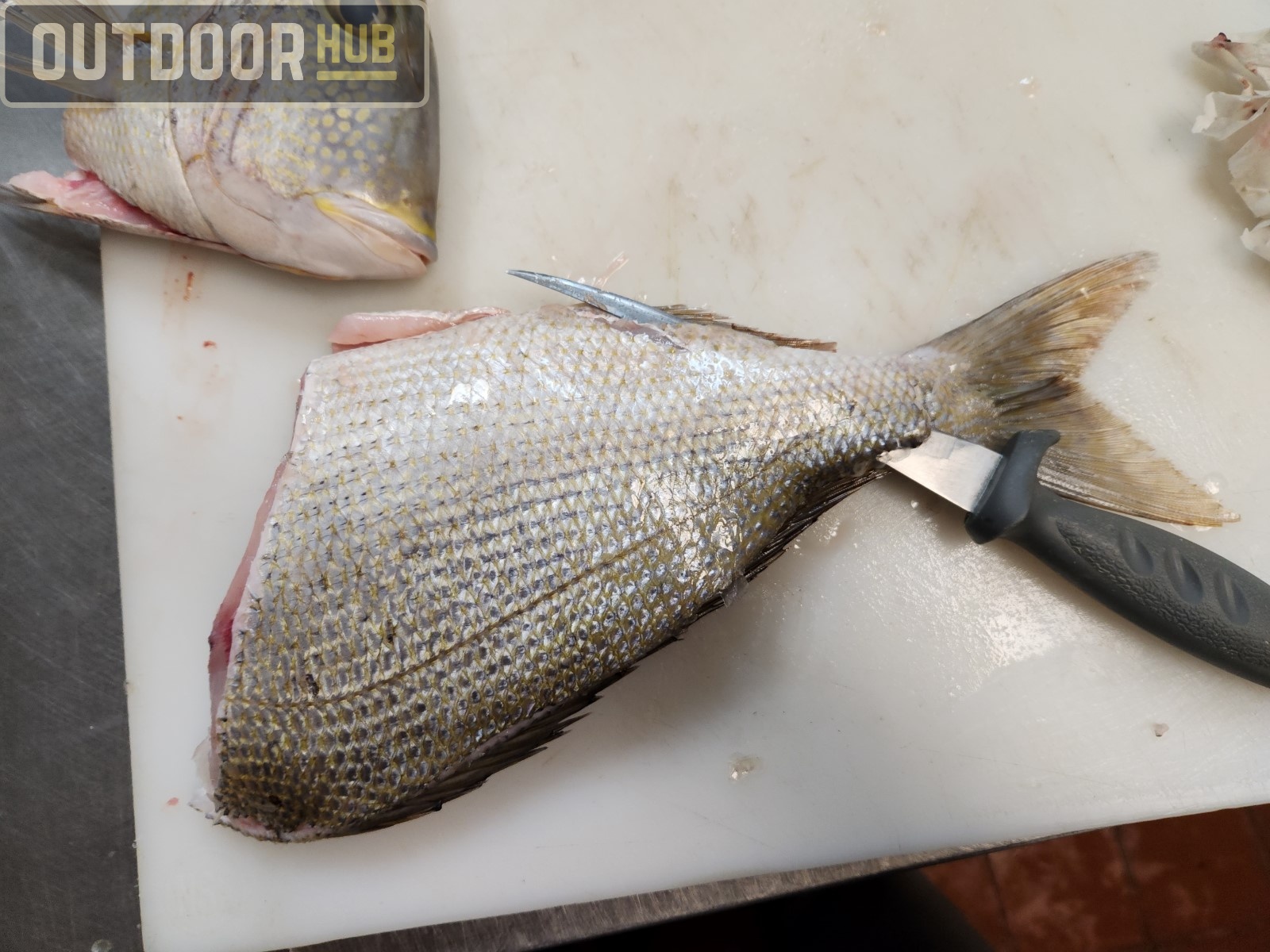
Once you get to the spine, carefully cut over it by slightly angling the knife and following the bone. Make long smooth cuts and make sure not to overshoot the spine and into the fillet. Once you pass over the spine, just keep using the same cuts till you hit the rib cage. There above the ribcage are the pin bones you need to push through those bones and then follow the ribs.
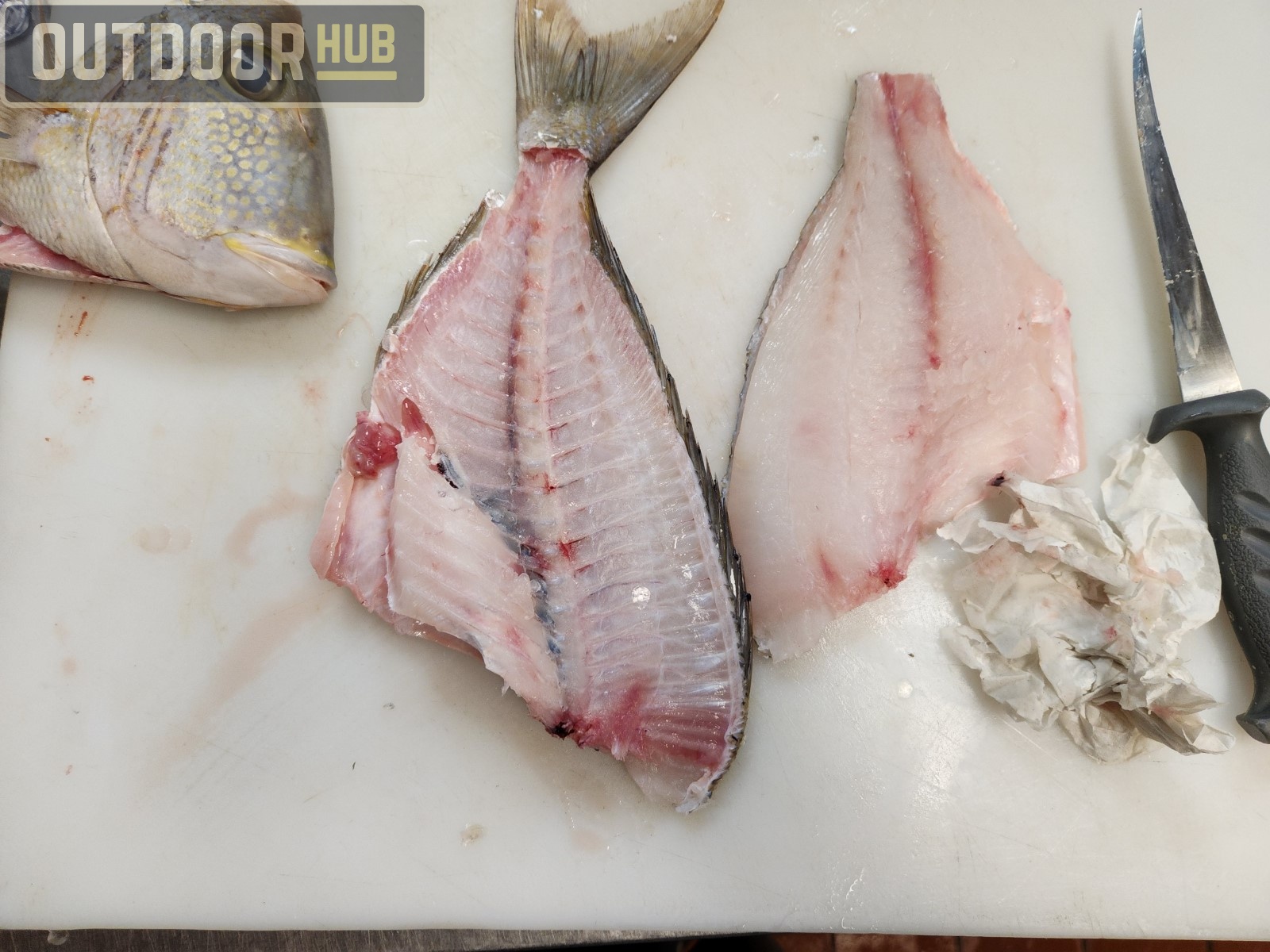
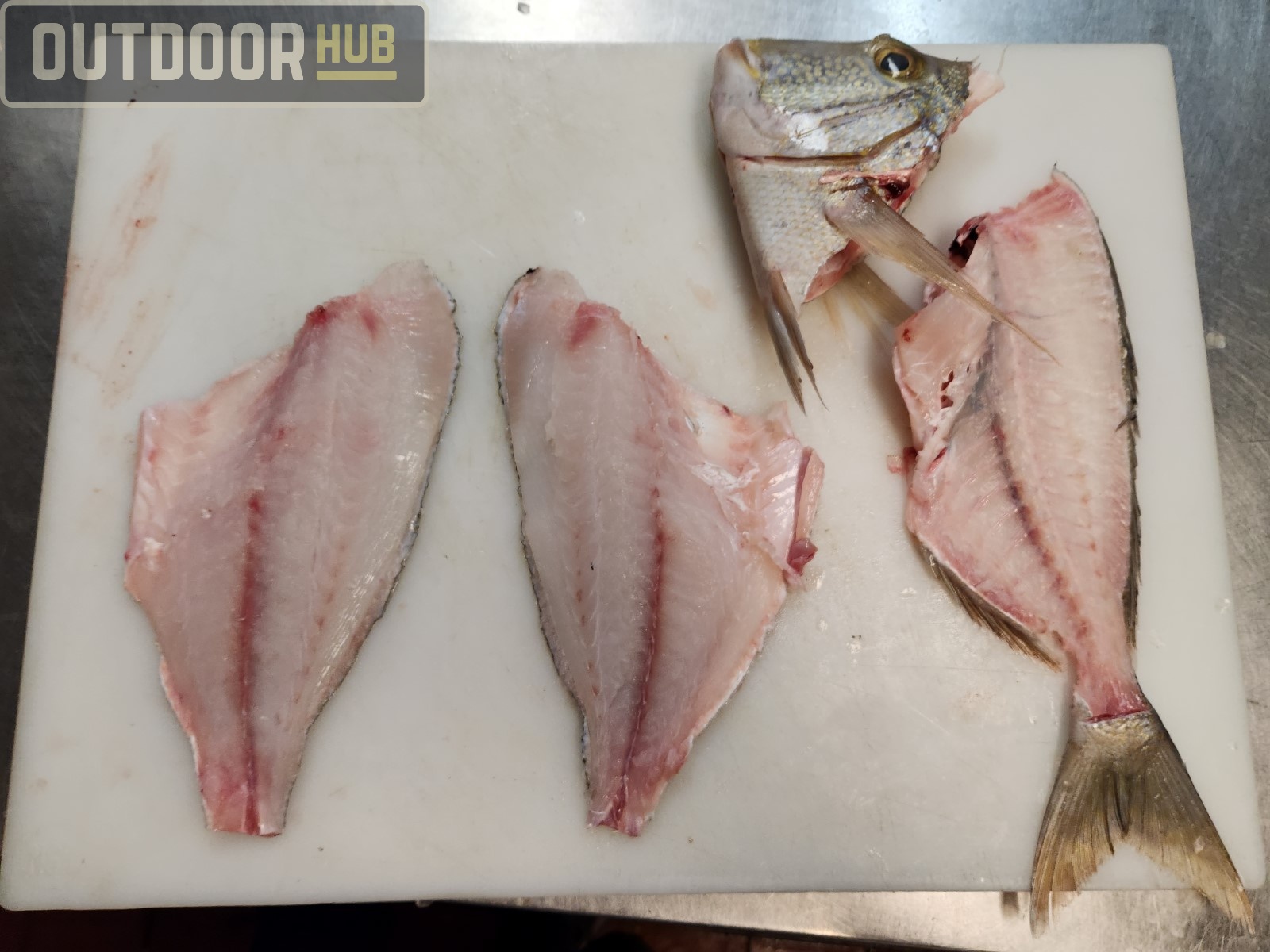
Now you got both fillets off the porgy, you need to remove the pin bones we talked about earlier. Along the mid-line of the fillet, there is a line of pin bones you want to cut along the bones to the skin on both sides of the line of bones. Not cutting through the skin when you do this though.
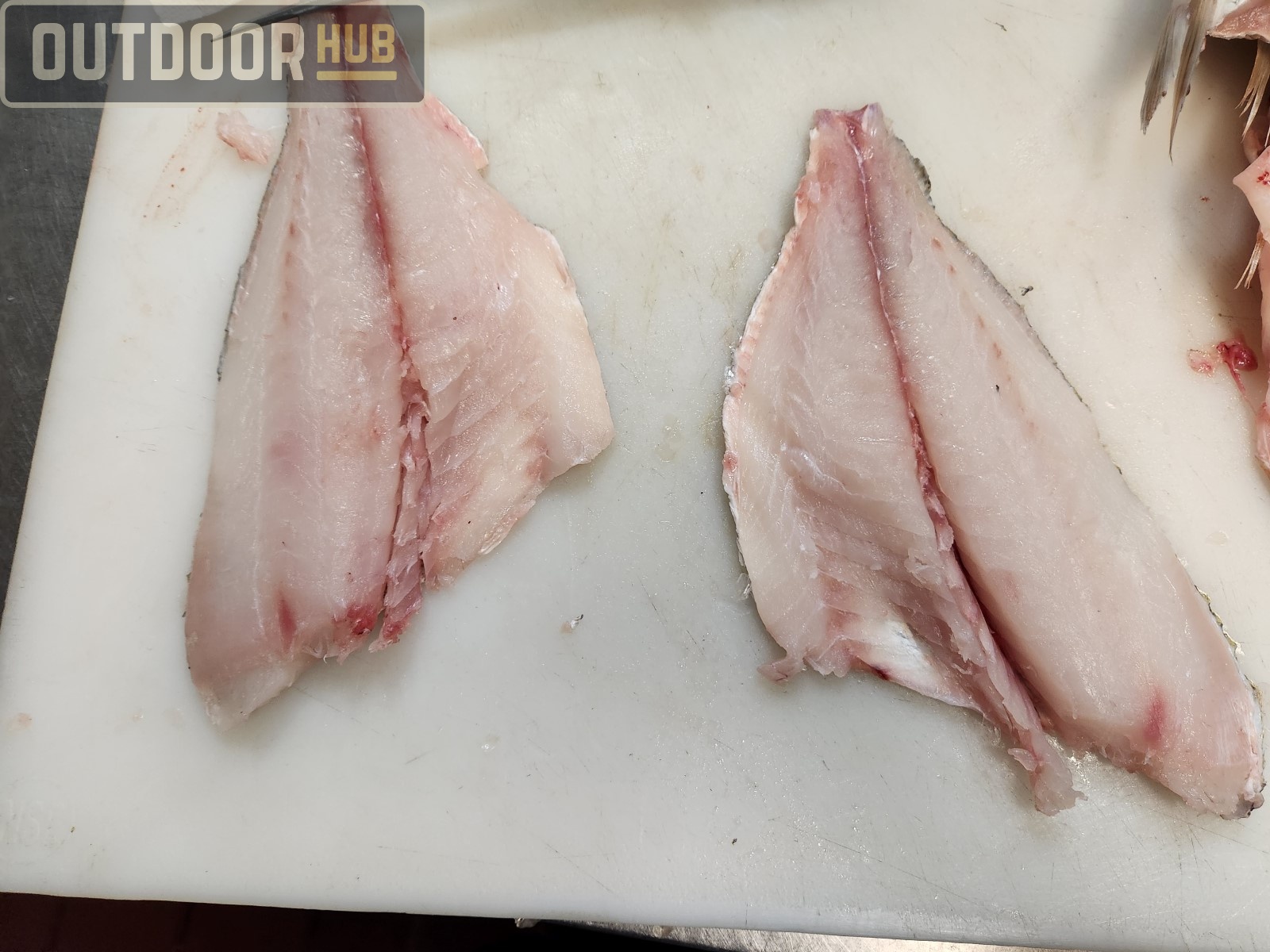
With the pin bones pretty much cut out, we got to skin the fillets. Start at the tail keeping the knife close to the skin and parallel to the cutting board, pushing the knife forward without sawing. Once skinned do a little trimming and then pack the fillets in paper towels and wrap up for later when we’re cooking.

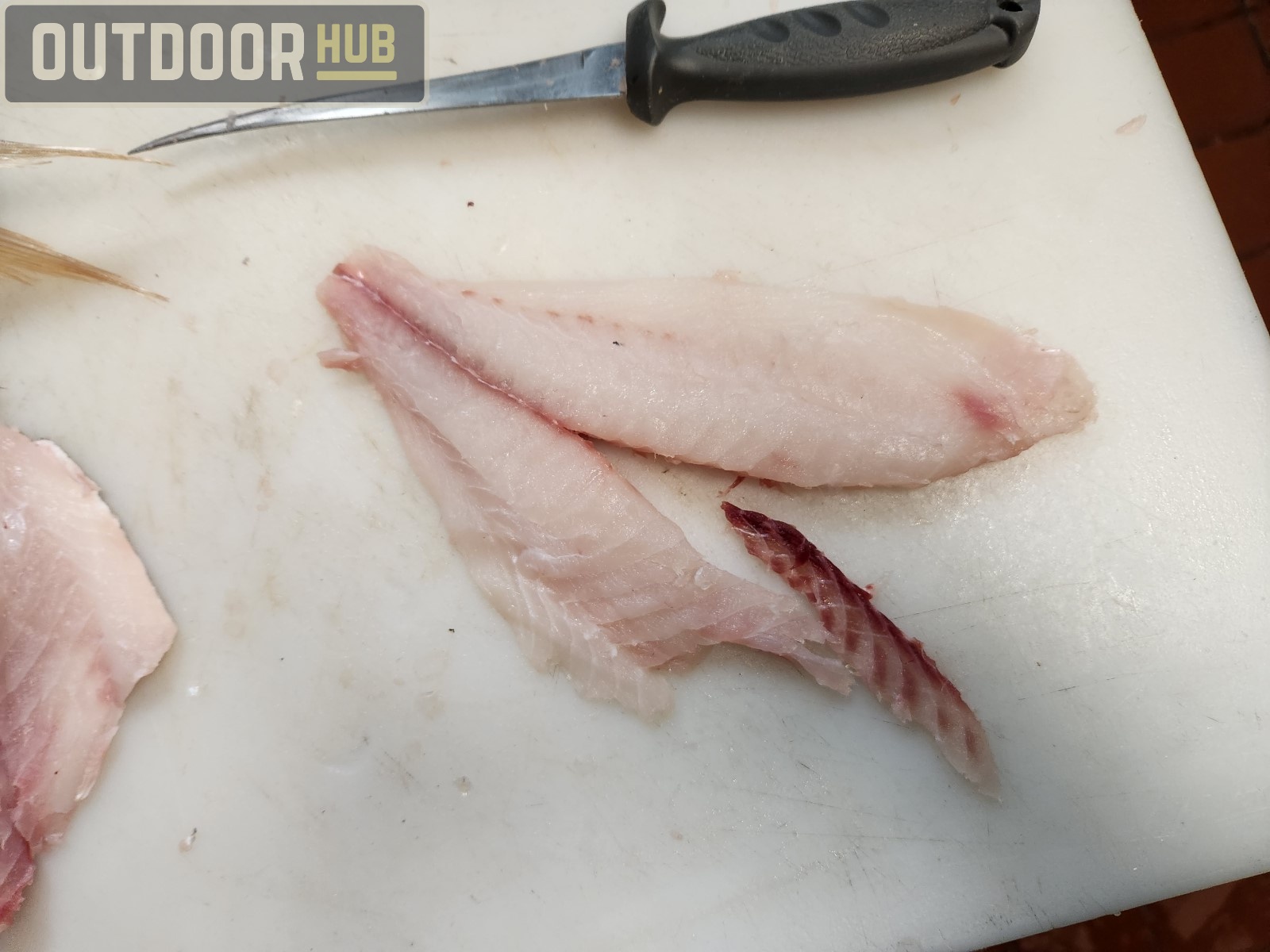
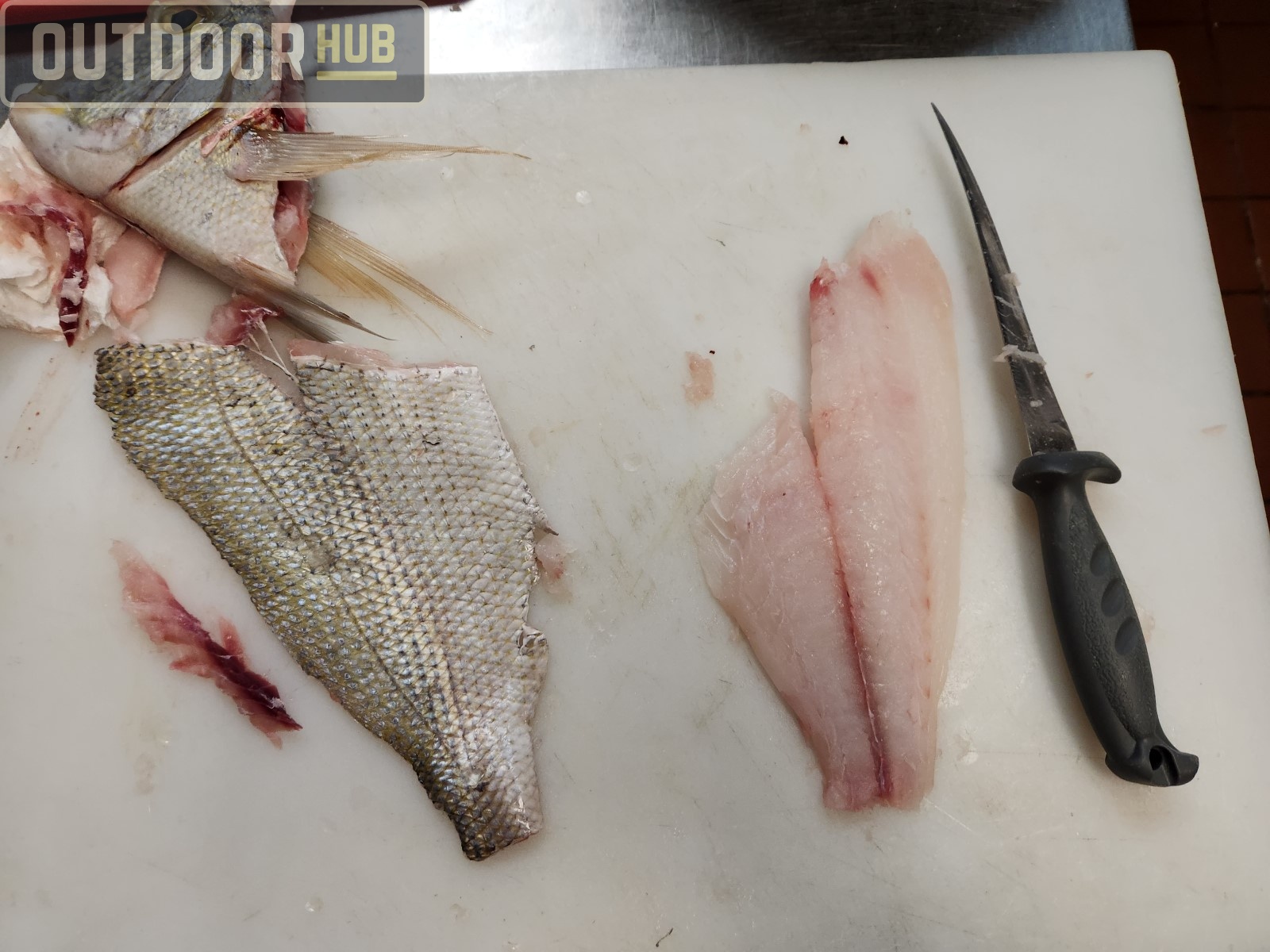

Cook your Catch – Knobbed Porgy (Chinese Steamed Fish)
Ingredients
- Ginger
- Green Onion
- Porgy Fillets(duh)
- Sesame Oil
- Light Soy sauce
- Dark Soy sauce
- Oyster Sauce
- Sugar
- Water
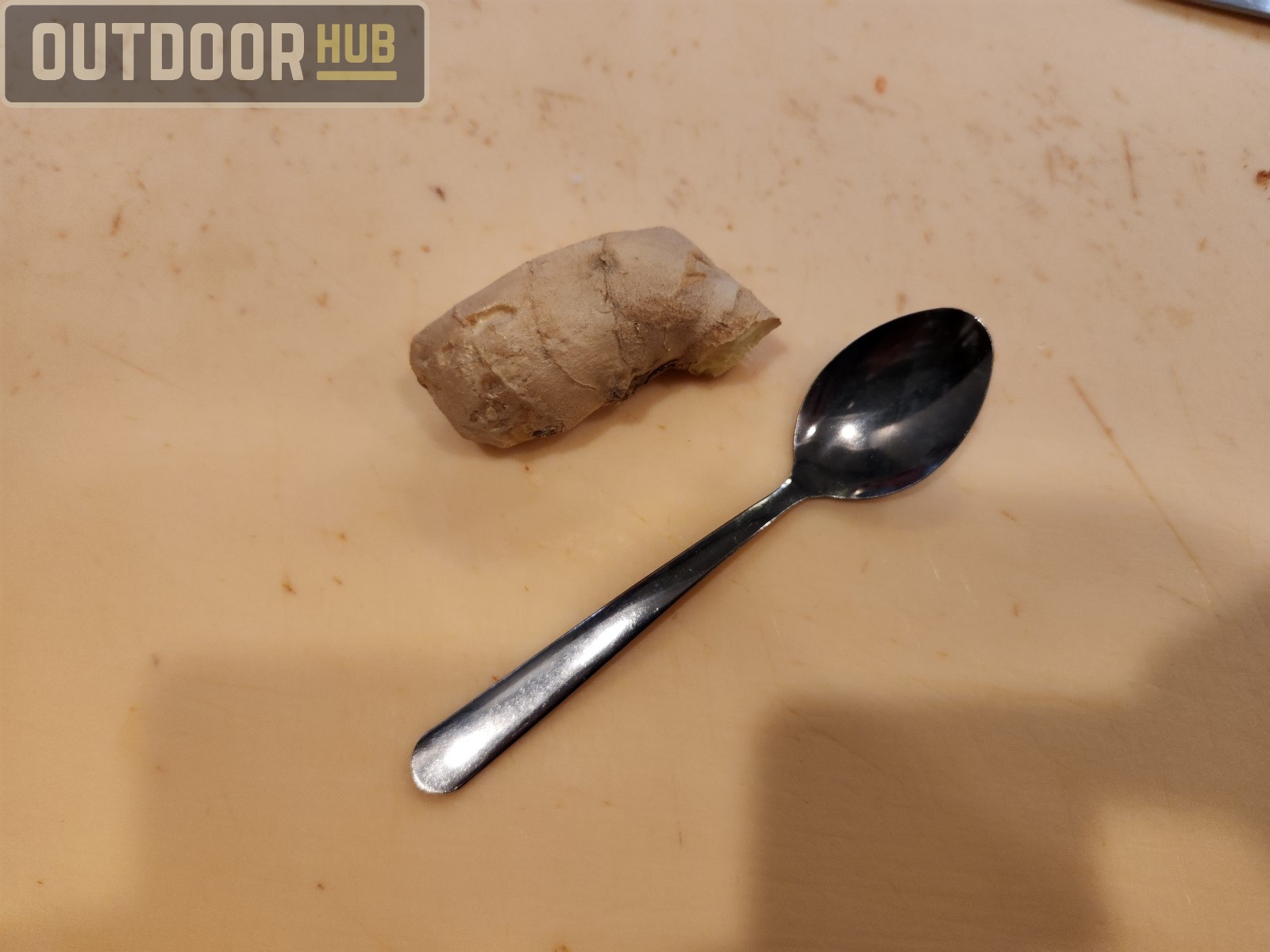
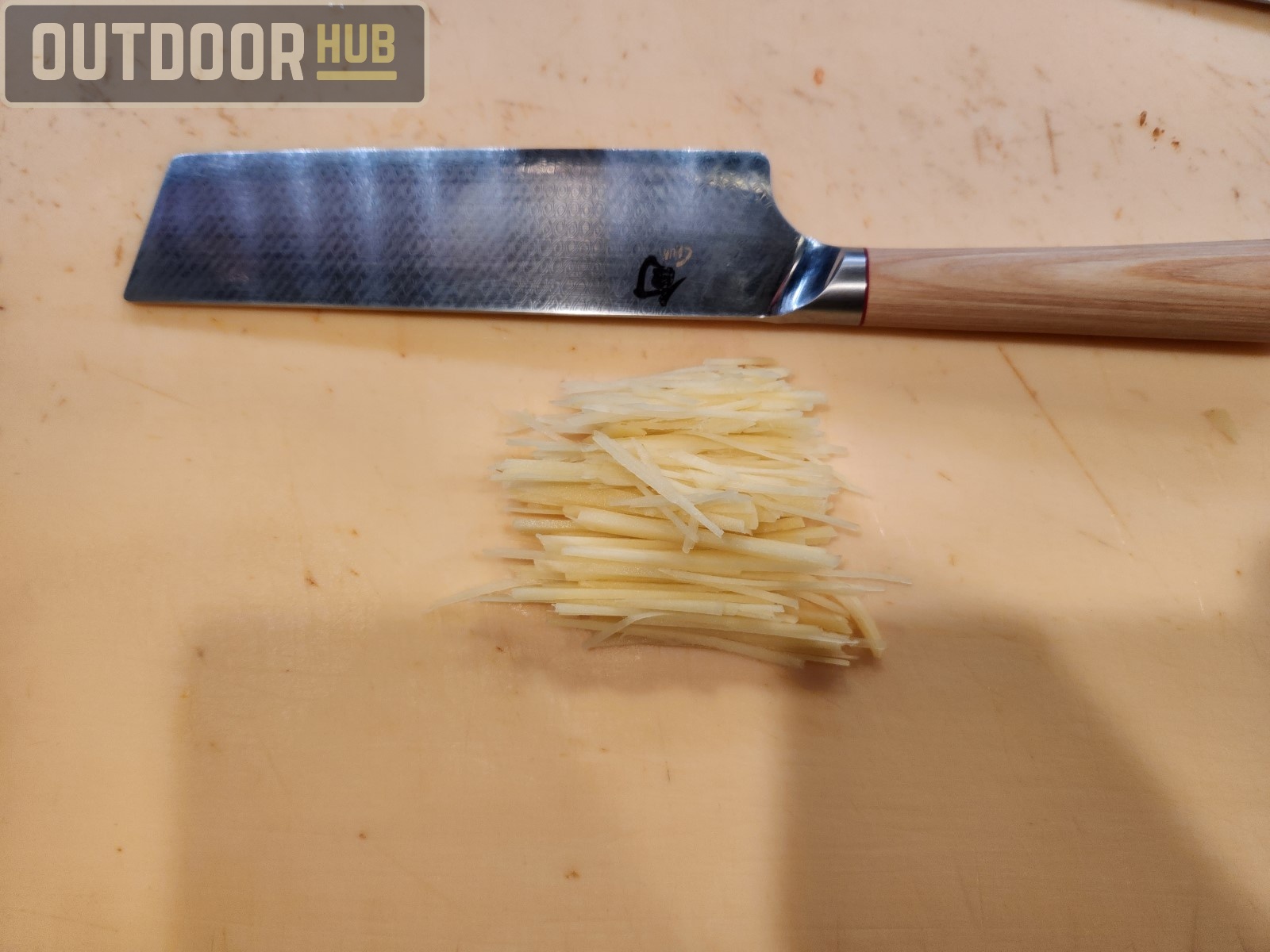
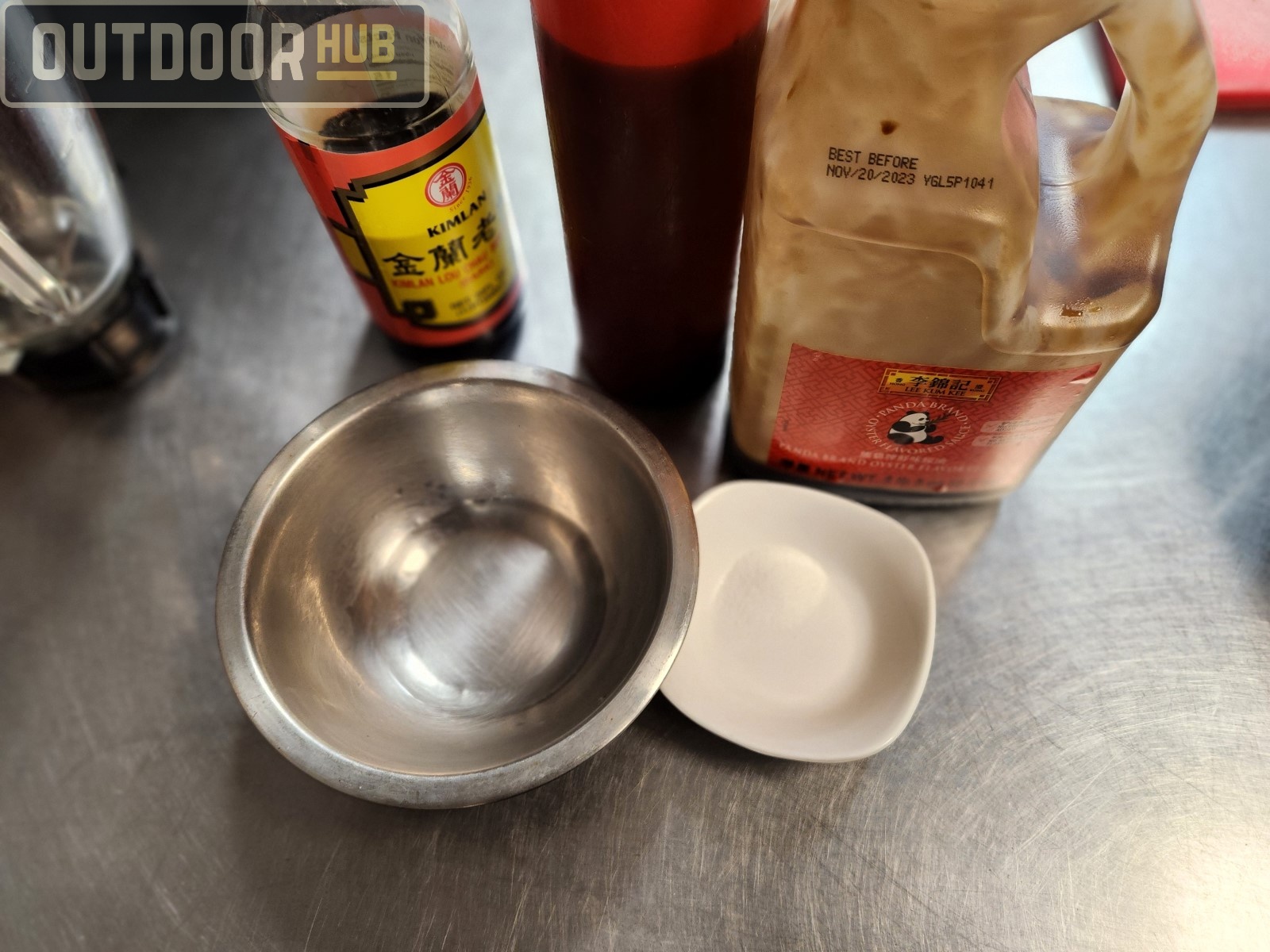
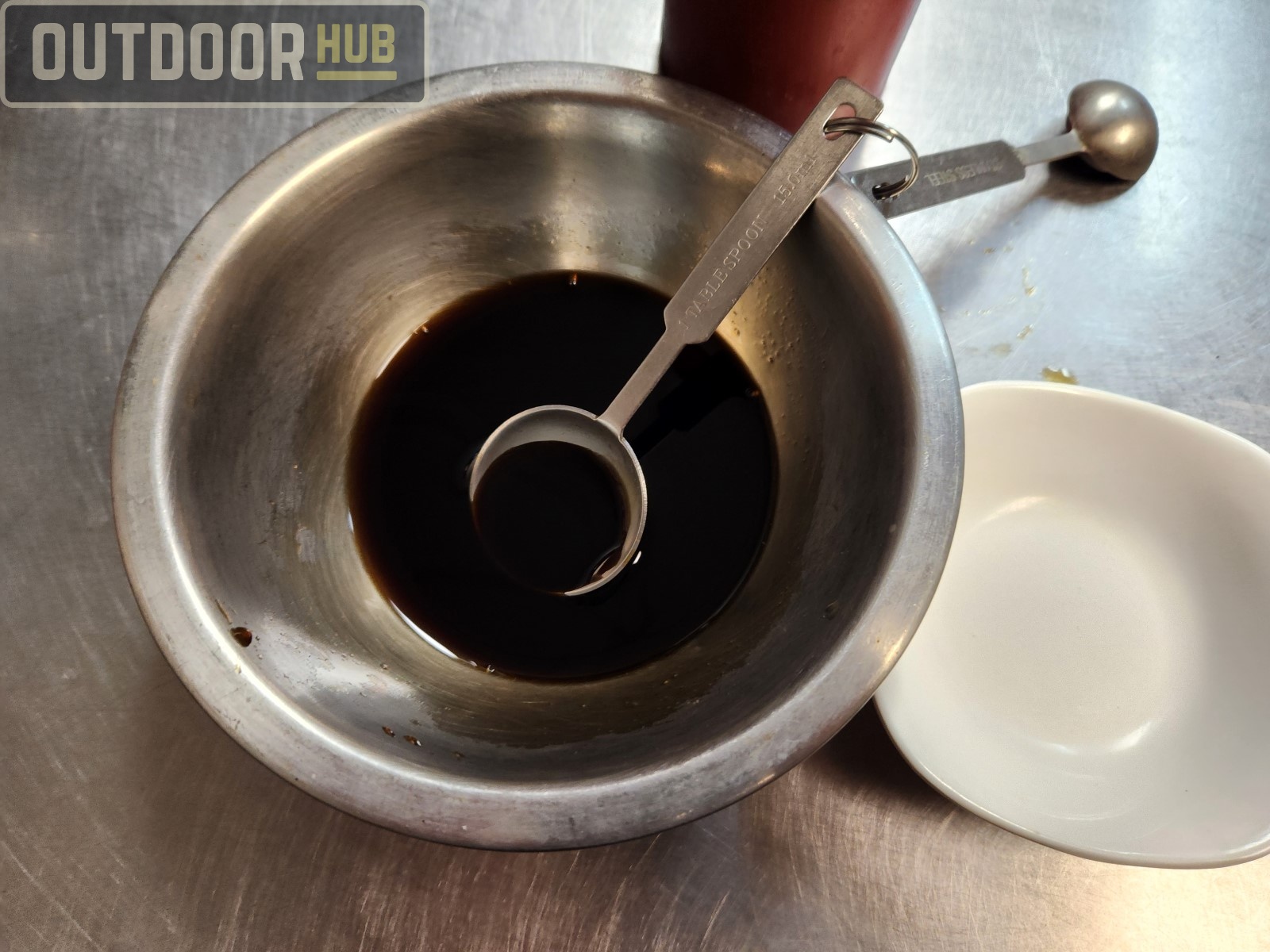
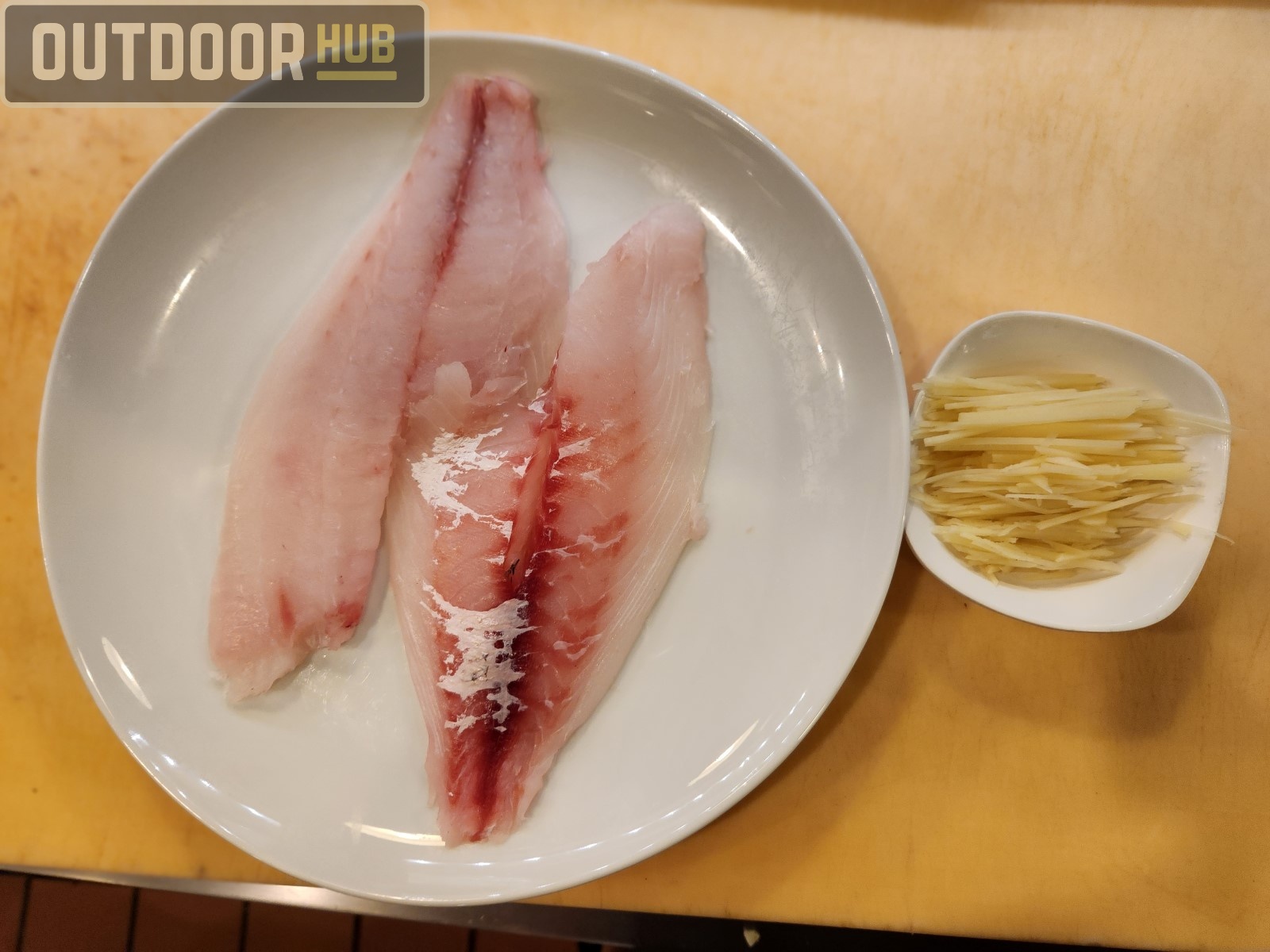
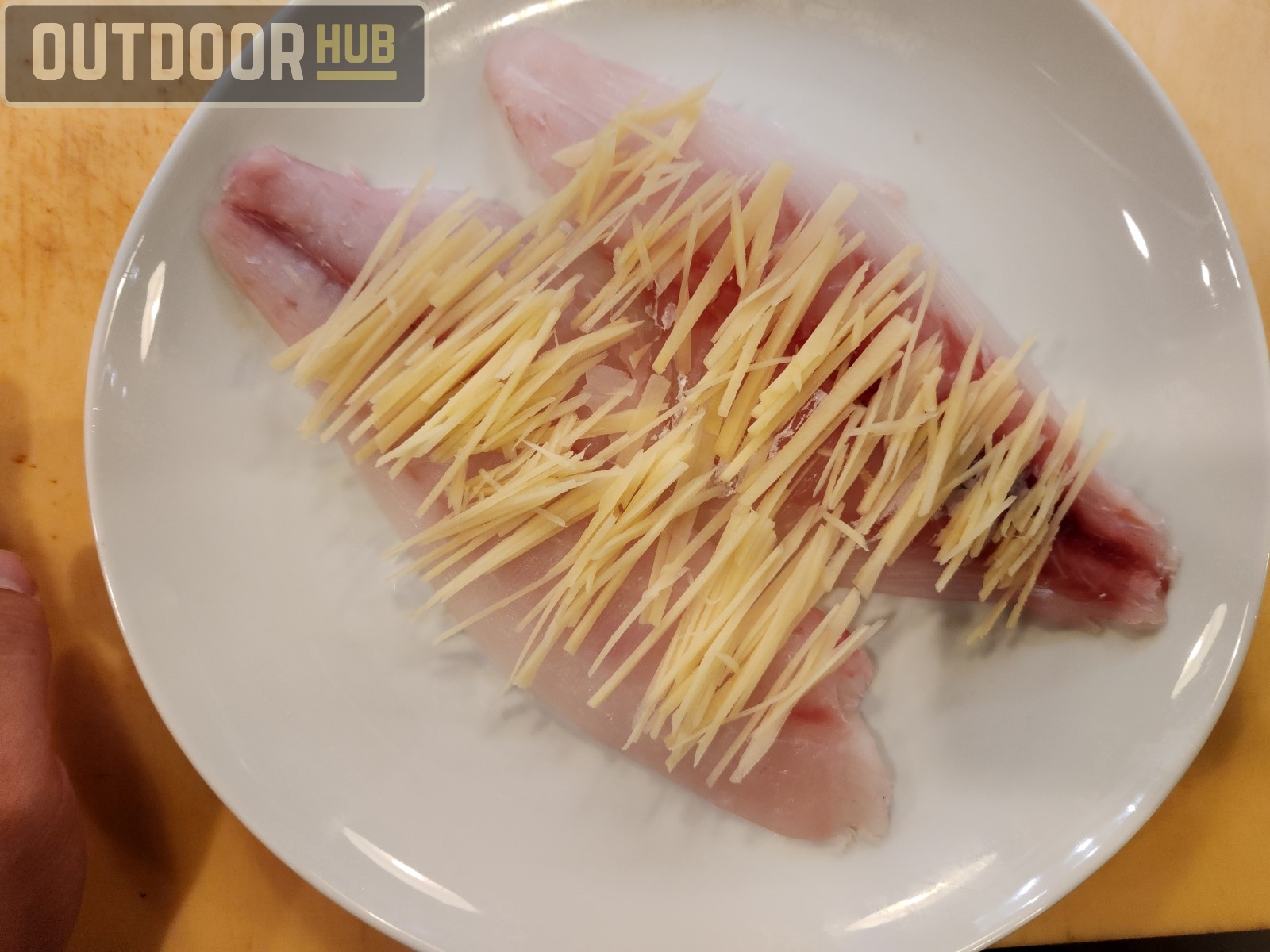
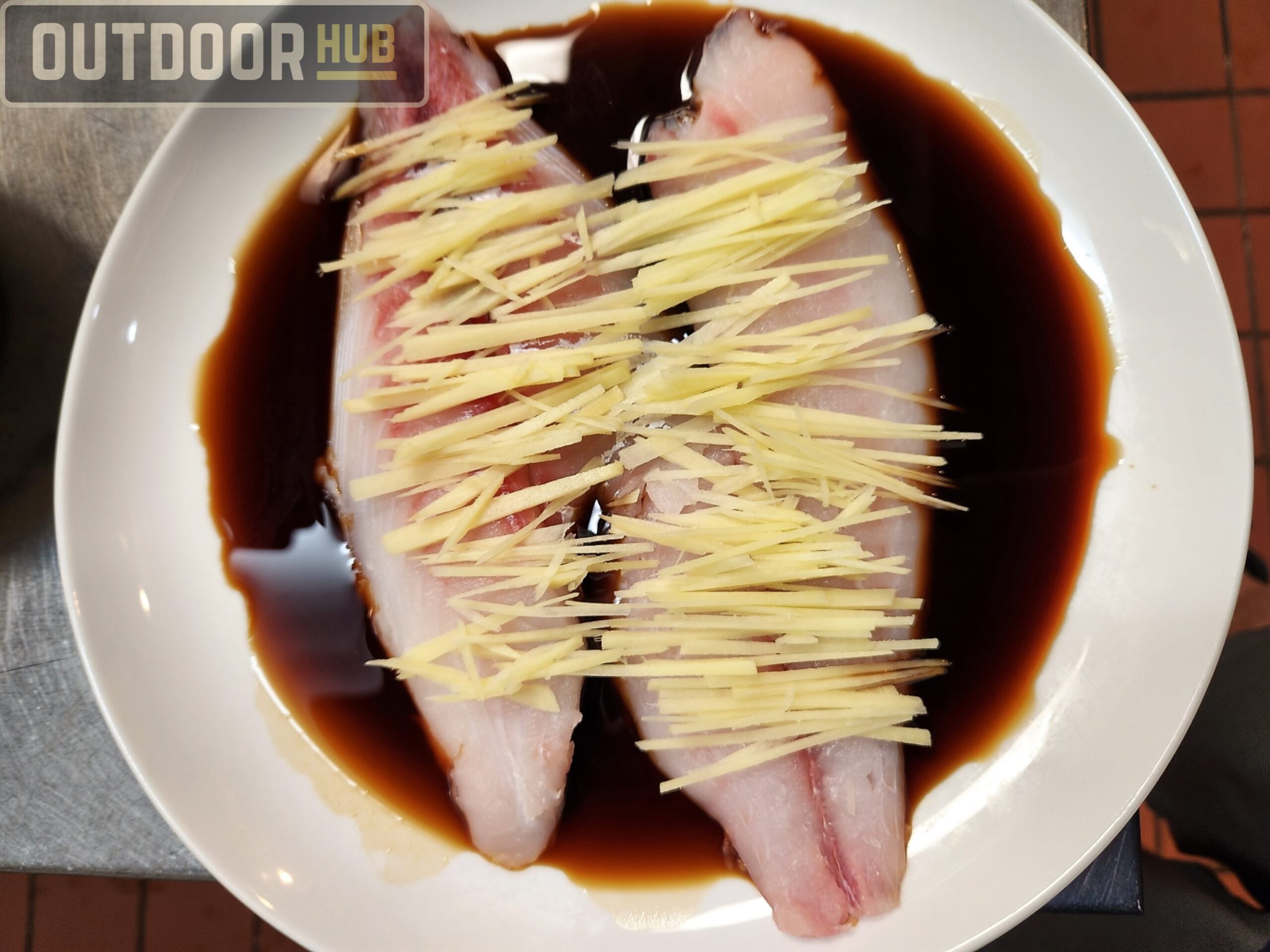
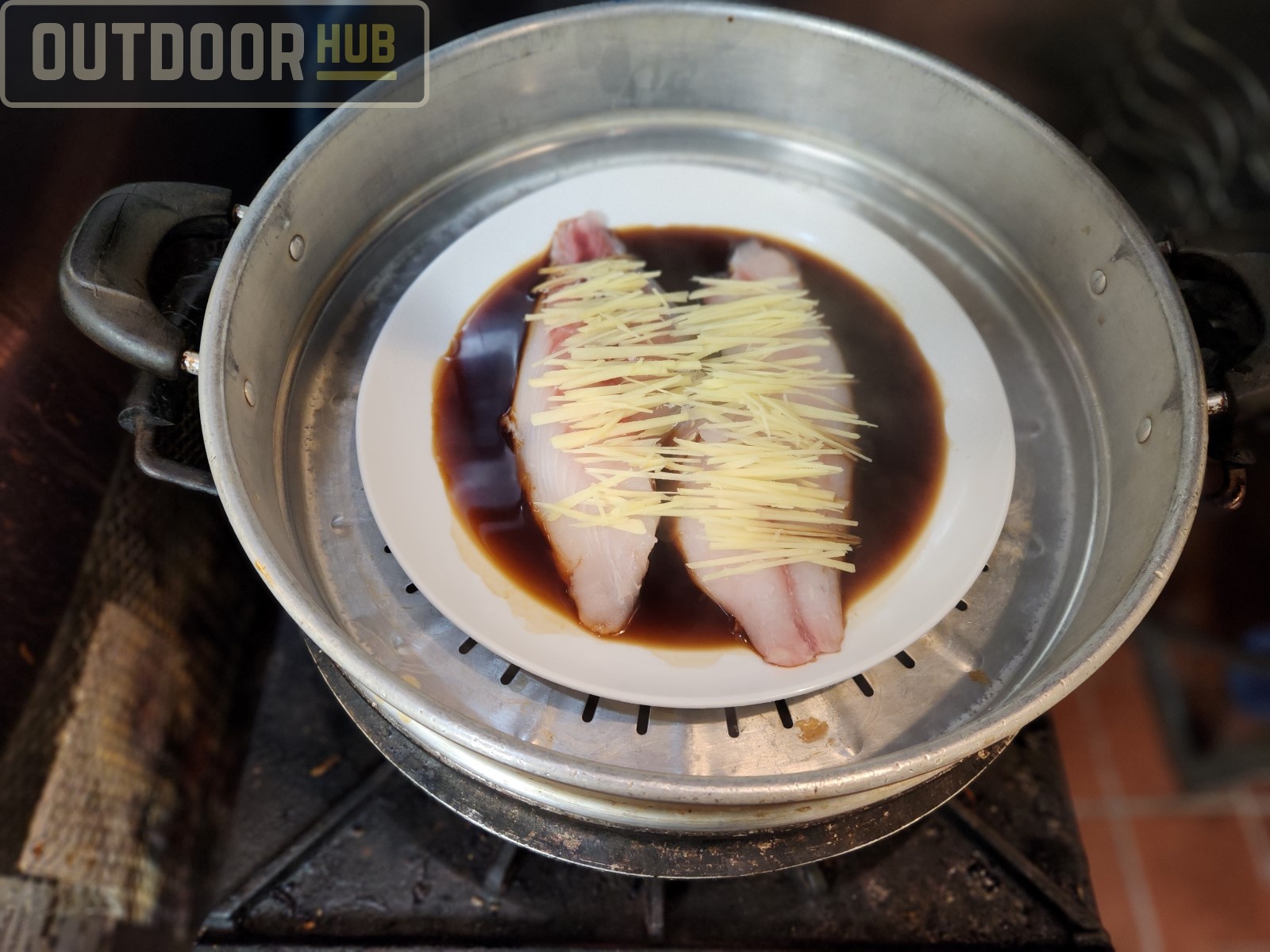
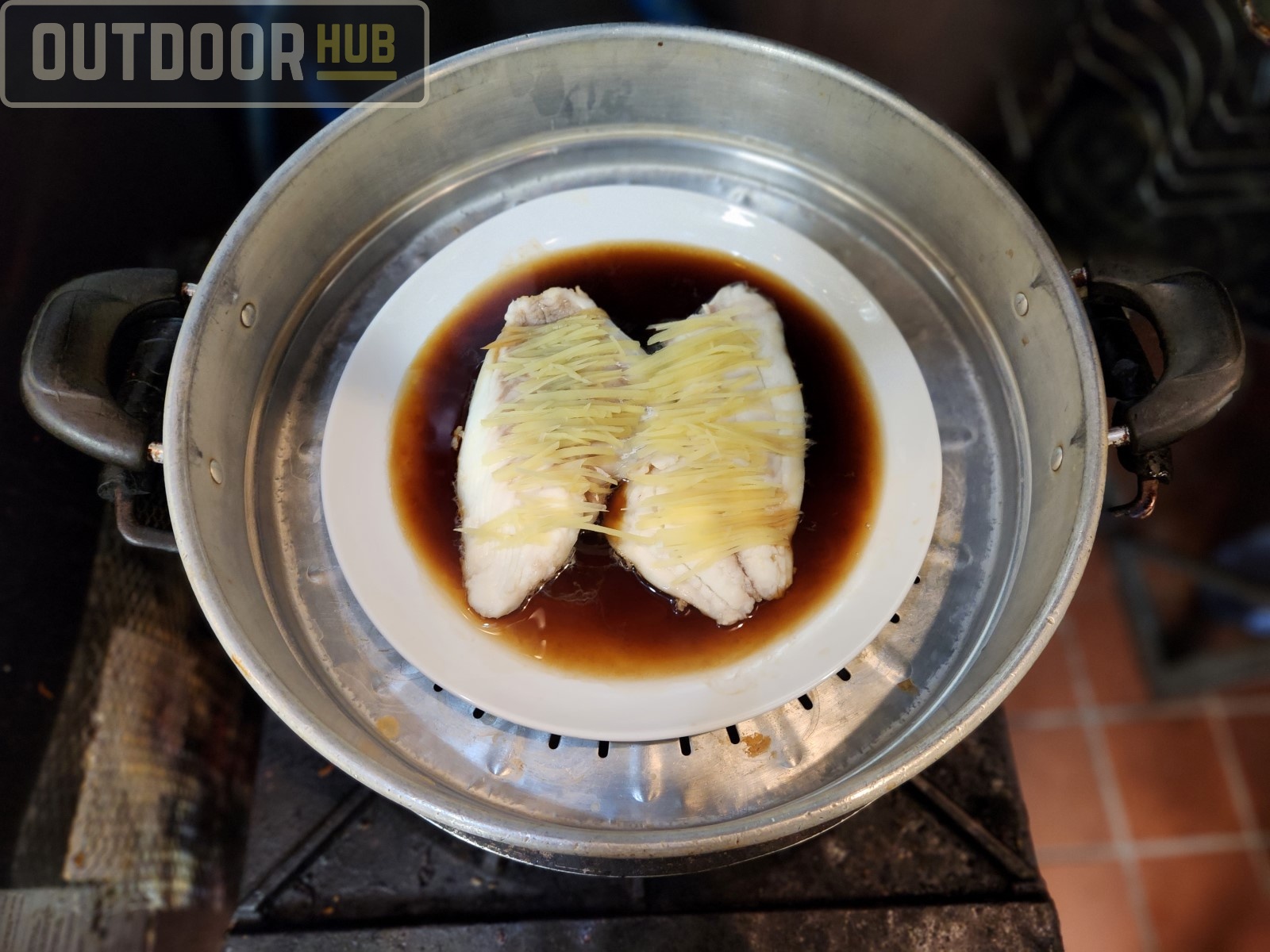
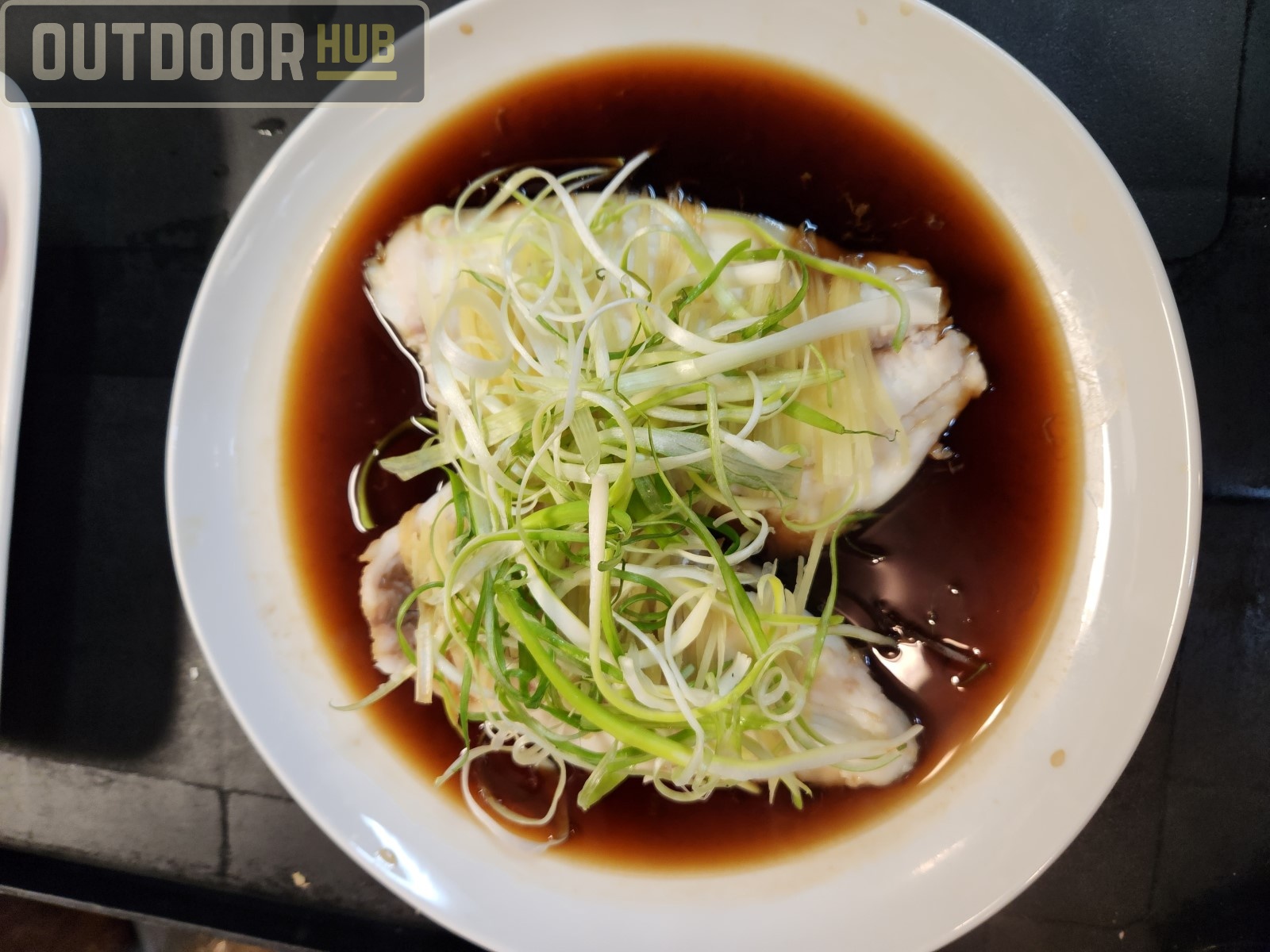
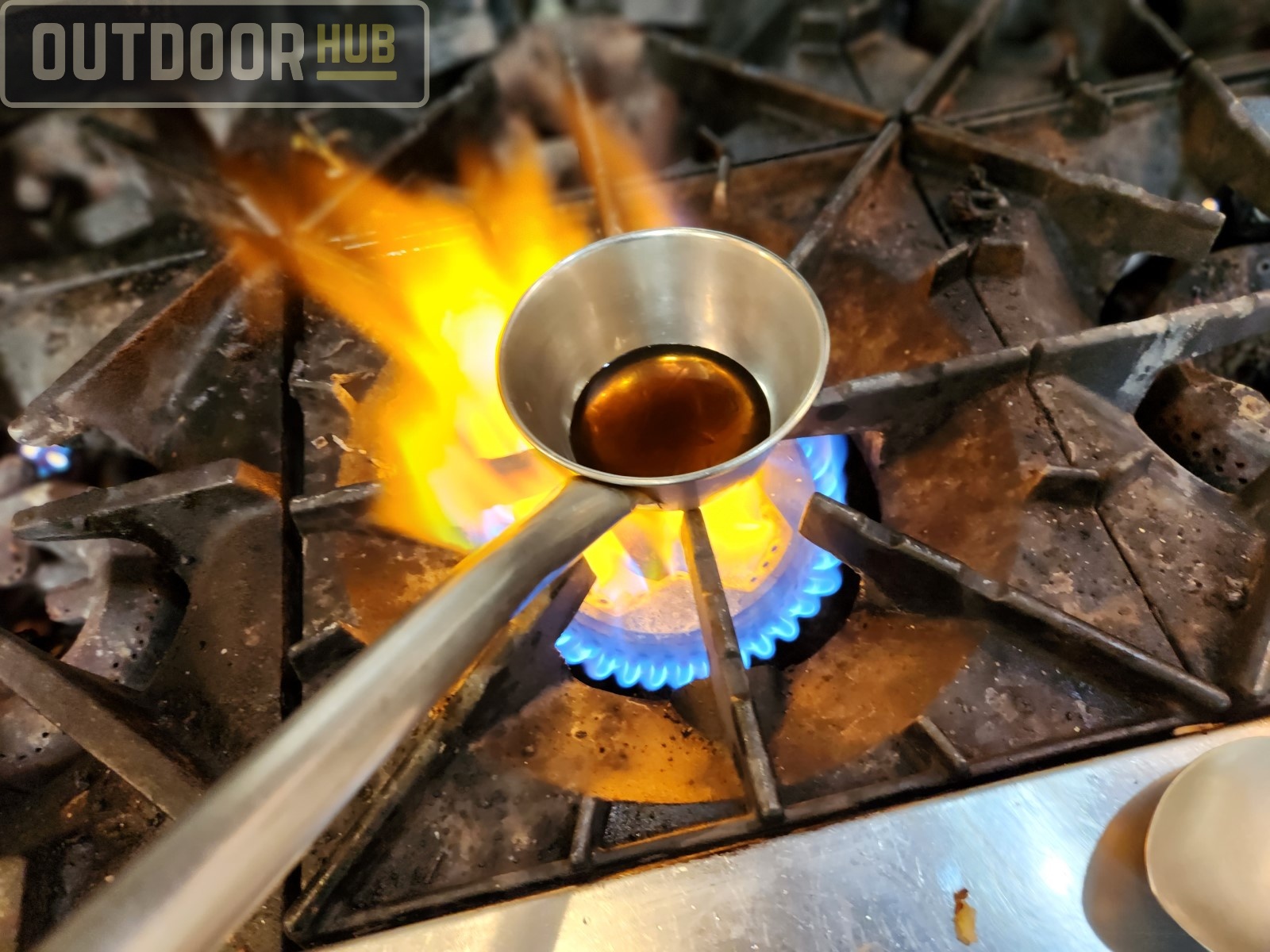

Chinese-style Steamed Fish is a very easy dish to make needing just a little prep and cook time. It doesn’t have to be just porgy for steamed fish either, any white-fleshed flaky fish works great for this recipe. It can also be done with whole fish as well, just the fish prep is a little different along with a longer cook time.

